Glass is increasingly taking a more prominent role in design schemes from weight-bearing structural interventions to clever techniques that enhance natural light. Here, we look at all the options
Creating much-needed extra floor space in a townhouse (particularly in London) often involves digging down into the basement level. While traditionally these rooms were dark and dank, these days advancements in glazing can result in light-filled voluminous spaces that are delightful to live in all year round. A typical design will be frameless sliding doors opening out into the garden or terrace with either a roof lantern or a series of glazed roof lights running down the length of the new side extension. With lots of natural light now in the room, there’s almost no barrier to using lots of pattern and colour in the space resulting in the perfect canvas to add character and personality.
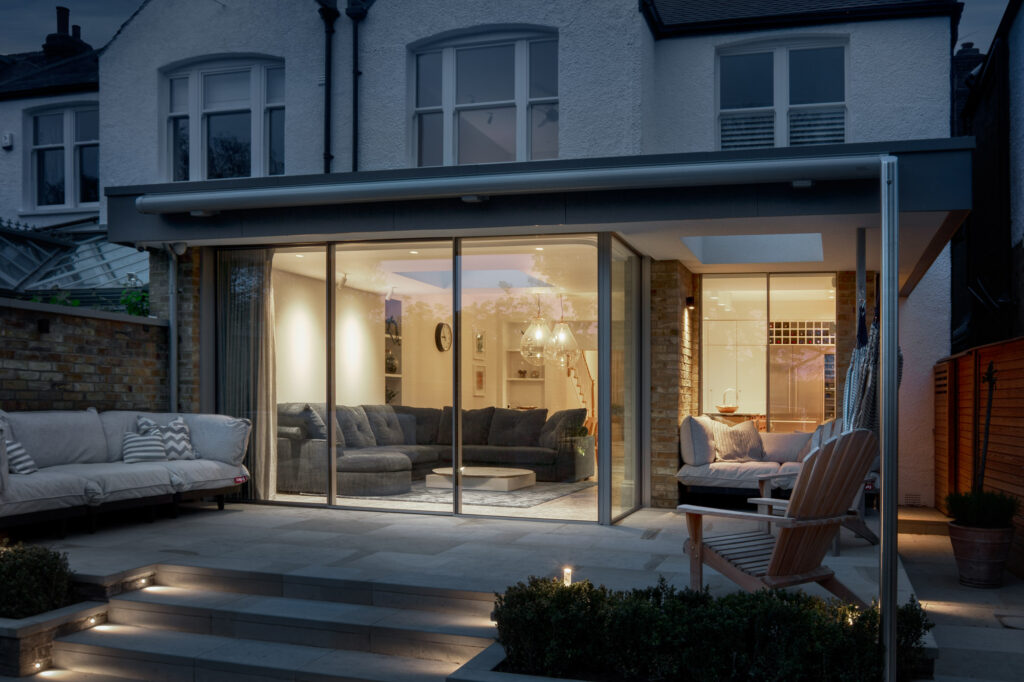
Hallways notoriously lack natural light but one way to overcome this is to open the space by replacing solid doors with glazed internal doors. A company such as Minima Interior offers Crittall-style internal doors made from lightweight and highly durable aluminium (a more affordable material than steel). These are available in a choice of clear, reeded or frosted glass and come as either single doors or doubles. The advantage of these architecturally striking doors is that they let the light flow through but keep areas defined. When commissioning any glazed internal doors, we’d recommend having two horizontal bars, not three. When there are three, the handle can end up being too low and you risk having to bend down slightly when opening or closing the door.
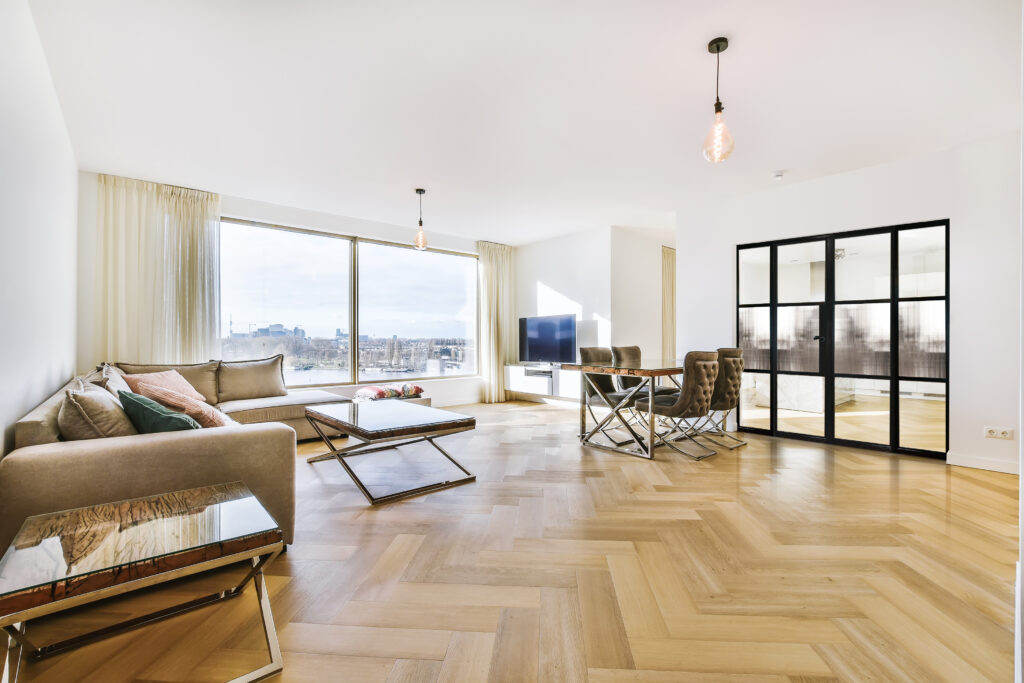
Fixed partitions are a subtle way to distinguish between rooms—often referred to as ‘zoning’ in the world of interior design–without creating more definite physical barriers. Minima Interior partition doors are made using 4mm toughened single glazing as standard with a slim 33mm outer frame. Using fluted glass (or a section of fluted glass) will add a strong architectural feature to a room and can be a useful way to carve out a reading area from a larger space, for example. Alternatively, use a fixed-glazed partition to define an entrance hallway within a larger open-plan living room.
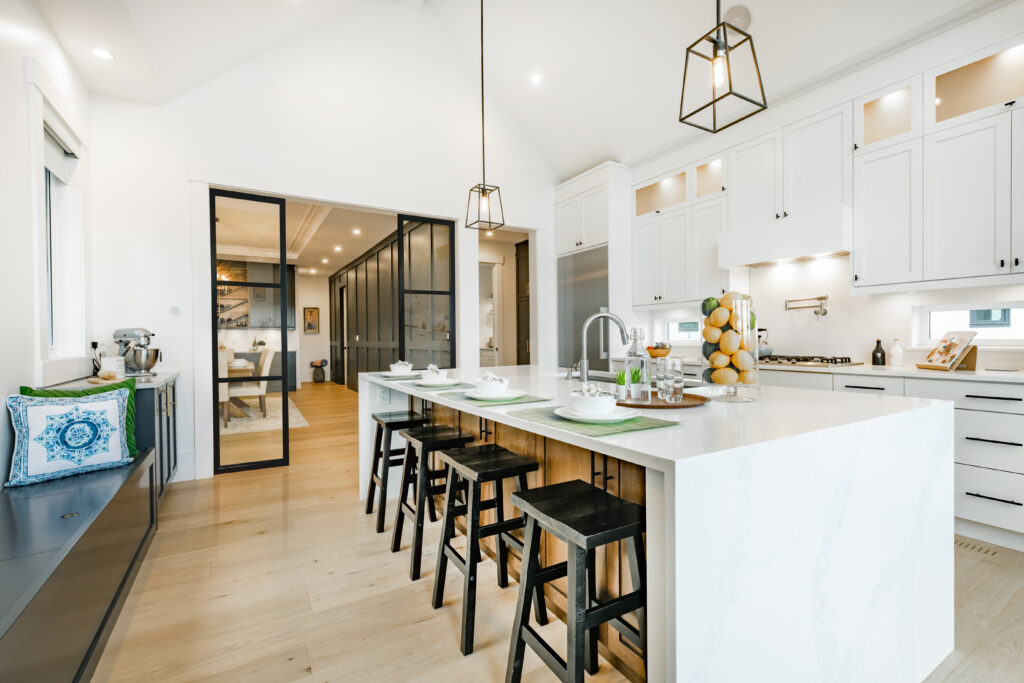
This concept, which starts to divide up an open-plan layout, has become increasingly popular since the pandemic. While open-plan living often looks attractive, it can create a problem in terms of the transfer of noise, alongside a lack of cosiness and warmth. In kitchens, even with the best-in-class extractor fans, it’s not always possible to keep cooking aromas from escaping into the rest of the house. A solution is to install a glazed wall. It allows all the action in the kitchen to be visible and the room remains firmly connected to the rest of the house rather than being shut away behind solid walls.
Structural glazing is used to describe glass that is integral to the design of the building. It usually involves the installation of glass panels which bear some of the weight of the structure. Often used for contemporary houses built by the waterside or deep in the countryside to make the most of the expansive views, it will typically combine frameless sliding doors with a fixed glazed section above. Bear in mind window loads when thinking about using a large amount of glazing in a property exposed to strong weather. Careful consideration is required to determine whether the glass is strong enough to withstand the impact of high wind.
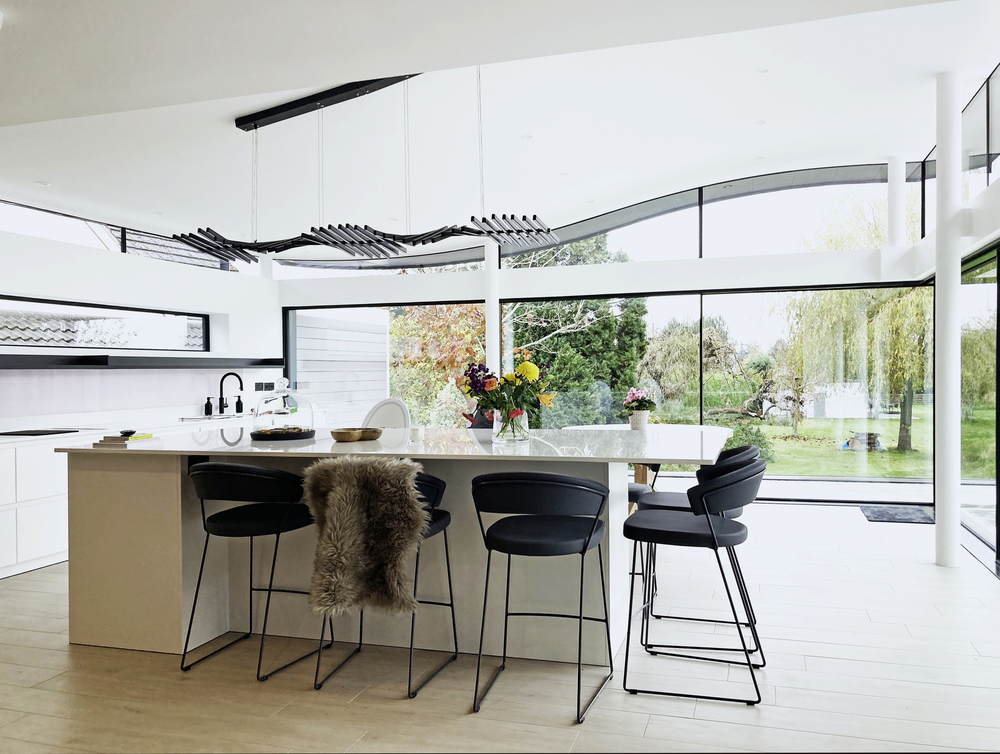
Mezzanine floors are regularly created in barn conversions. Planning constraints often insist on owners using existing openings and as these were often designed to be large enough to fit agricultural equipment, full-height frameless sliding doors are often an ideal choice. Where problems arise is on the second floor where it is often impossible to create a row of new windows. The solution is often to carve out a mezzanine level at either end of the barn and use these spaces as either studies or bedrooms. Using a glass wall (either full height or half height) is a great way to delineate the room without sacrificing light on the upper level.
Glass used internally can be clear, frosted, ribbed or textured. Ribbed (sometimes called fluted glass) is often used in hotel design but has recently transferred into residential schemes. Beautiful and timeless, it does the perfect job of obscuring the view into an adjacent room while still letting light pour through, making it an ideal choice when there is a need for some privacy such as an ensuite bathroom.
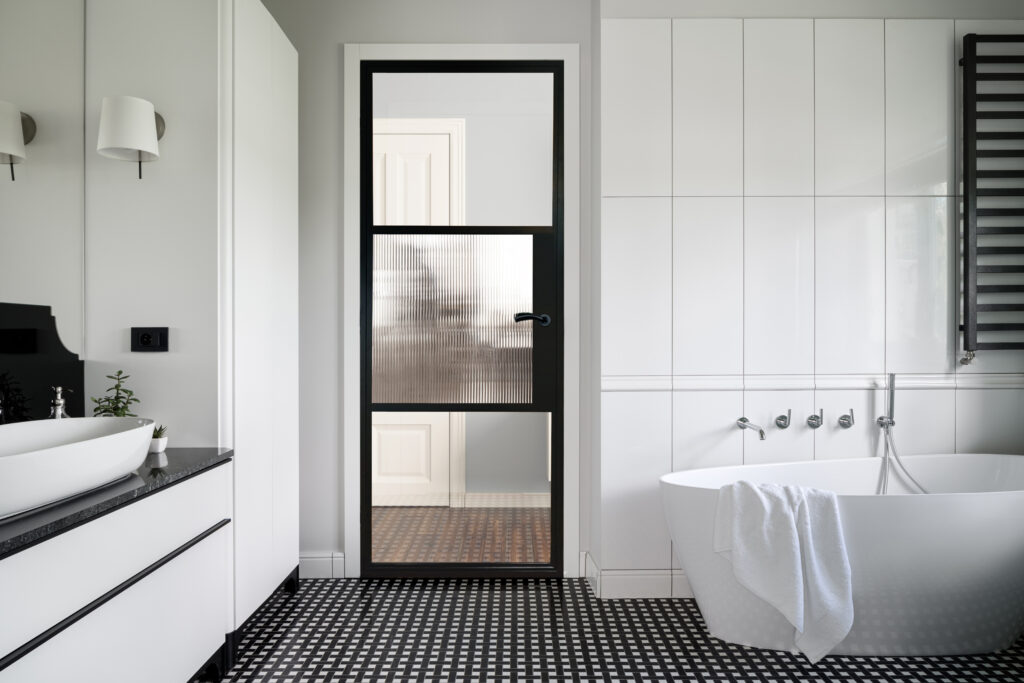
Another design feature that is being embraced by many is using antique mirrored glass in the home. Available in panels or tiles fixed to backboards, the glass has a lightly mottled effect. Designers will use it to flank a chimney breast where the reflection captures the flicker of flames in a fire grate or it also looks great used as a splashback behind kitchen worktops. Antique glass adds instant interest to a room and is often more comfortable than standard mirror glass which can look too clinical in some spaces.
Thinking about using glass internal or external doors for your project? Give us a call to find out more about Minima’s frameless sliding doors and internal glass doors.